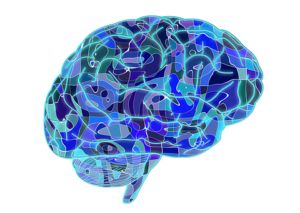

Fentanyl is an anesthetic introduced in the 1960s by Paul Janssen. It was created to help reduce one’s pain sensitivity. In the U.S it was then used medically in the mid-60s. It was initially used for “management of chronic pain of all forms of cancer as well as the persistent, intense pain from many noncancerous maladies”.

It can now be marked as “50-100 times more potent than morphine”. The potency can be equivalent to that of an elephant tranquilizer.
Fentanyl varies in the method of deliveries– sublingual, buccal, intranasal, and intravenous. Some of the effects of fentanyl include sedation, decreased respiration, euphoria, and drowsiness.
It has since increased in popularity for use due to its availability by prescription or illegal purchase on the streets or the black market. One of the dangers with fentanyl that if purchased illegally or on the market, it can also be artificially synthesized. This means that users are not always getting what they think they are.
Another danger is often times users mix fentanyl other drugs such as heroin and cocaine, and even alcohol. This substantially increases the likeliness of an overdose as well as other health concerns, and even death.
The aggressive spike we have seen in overdoses and deaths has been astronomically high in comparison to the last decade.
From a DEA report in 2016 —“According to the Florida Department of Law Enforcement Medical Examiners Annual Reports, fentanyl was identified in increased by nearly 263% to 911 in 2015. Of the identified 911 descendants in 2015, fentanyl was the cause of death in 705 of those persons (77.4%), a 418% increase from 2012”.
And that is just looking at the state of Florida.
Nationally, 2016 reports show, about 42,250 overdoes due to opioid use. Fentanyl thought to estimate contributing to about half of this number at 19,413 deaths.
In 2017 that number rose another 10,000 deaths to total about 29,406 overdose deaths from Fentanyl. From 2002 to 2017 there was a 22-fold increase in the total number of deaths.
When fentanyl is taken/injected it results in a decrease in blood 02 levels caused by drug which leads to respiratory depression.

“Opioid receptors are also found in the areas of the brain that control breathing rate. High doses of opioids, especially potent opioids such as fentanyl, can cause breathing to stop completely, which can lead to death. The high potency of fentanyl greatly increases risk of overdose, especially if a person who uses drugs is unaware that a powder/pill contains fentanyl.”- National Institute of Drug Abuse
And people are dying…these are the facts.
On average 115 Americans die every day from an opioid overdose. We, at BTG, are working hard in fighting against these statistics. Aiming to provide individuals an alternative to using drugs and alcohol, and supporting them in rebuilding health relationships, habits, and a life!